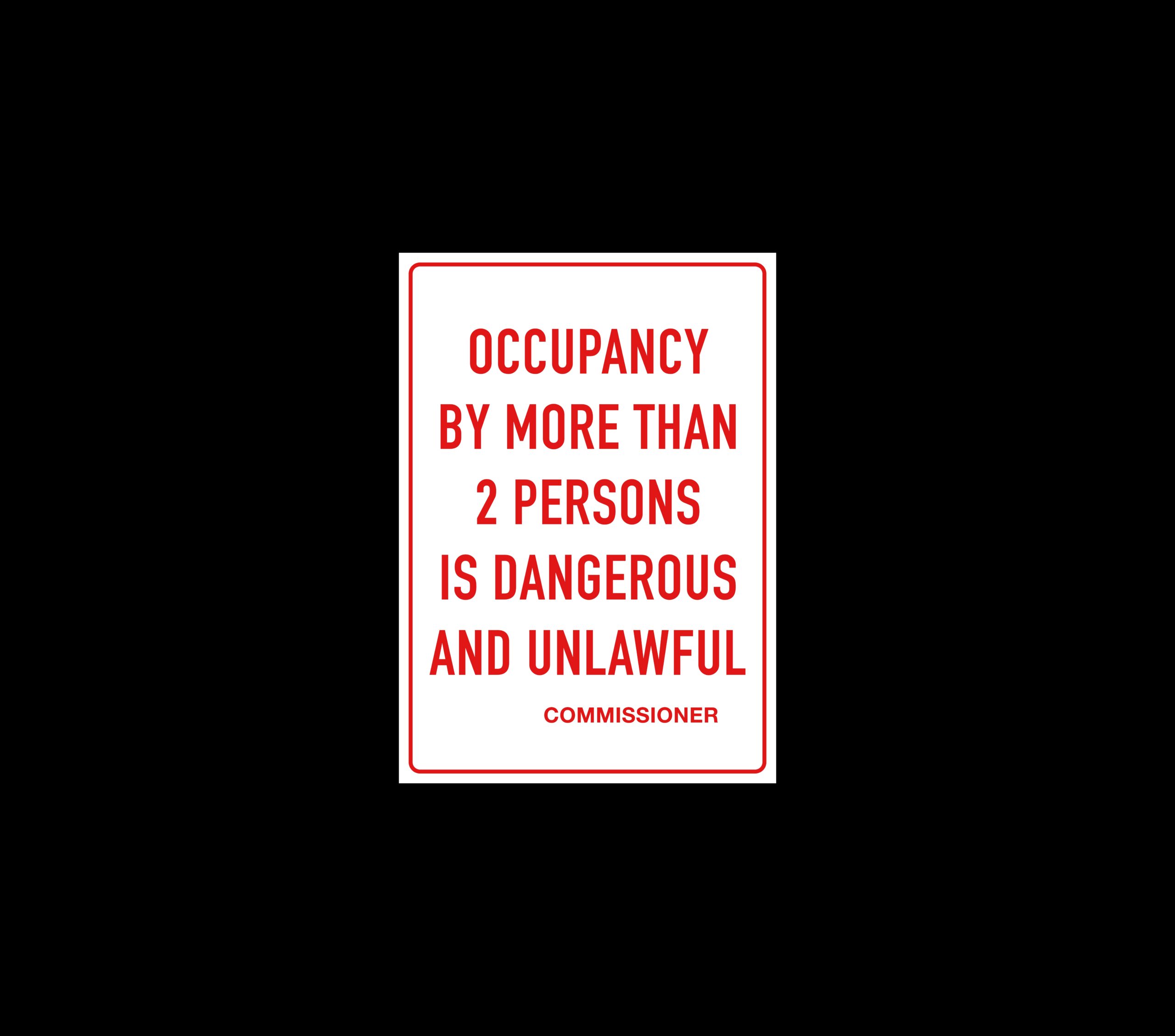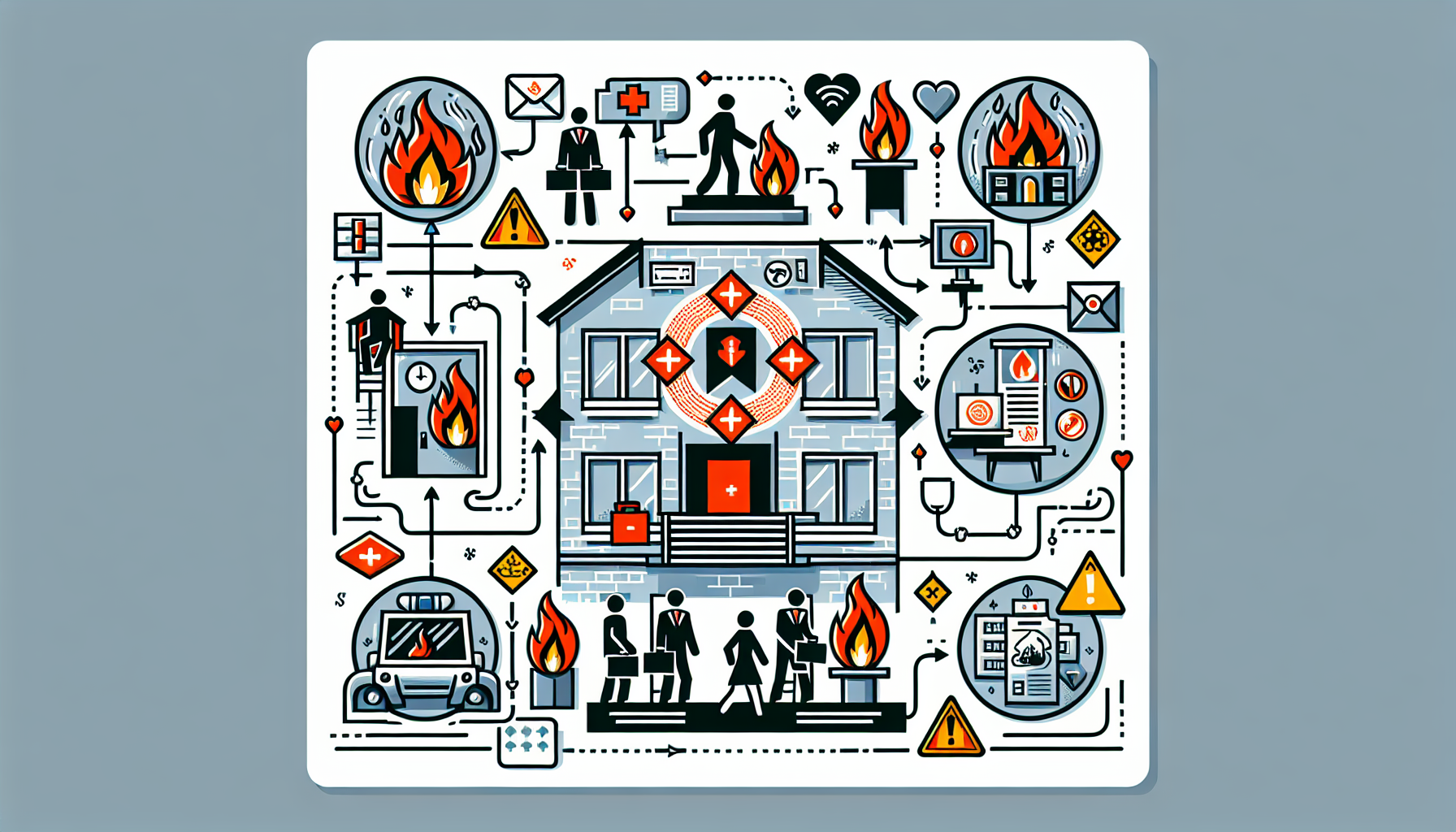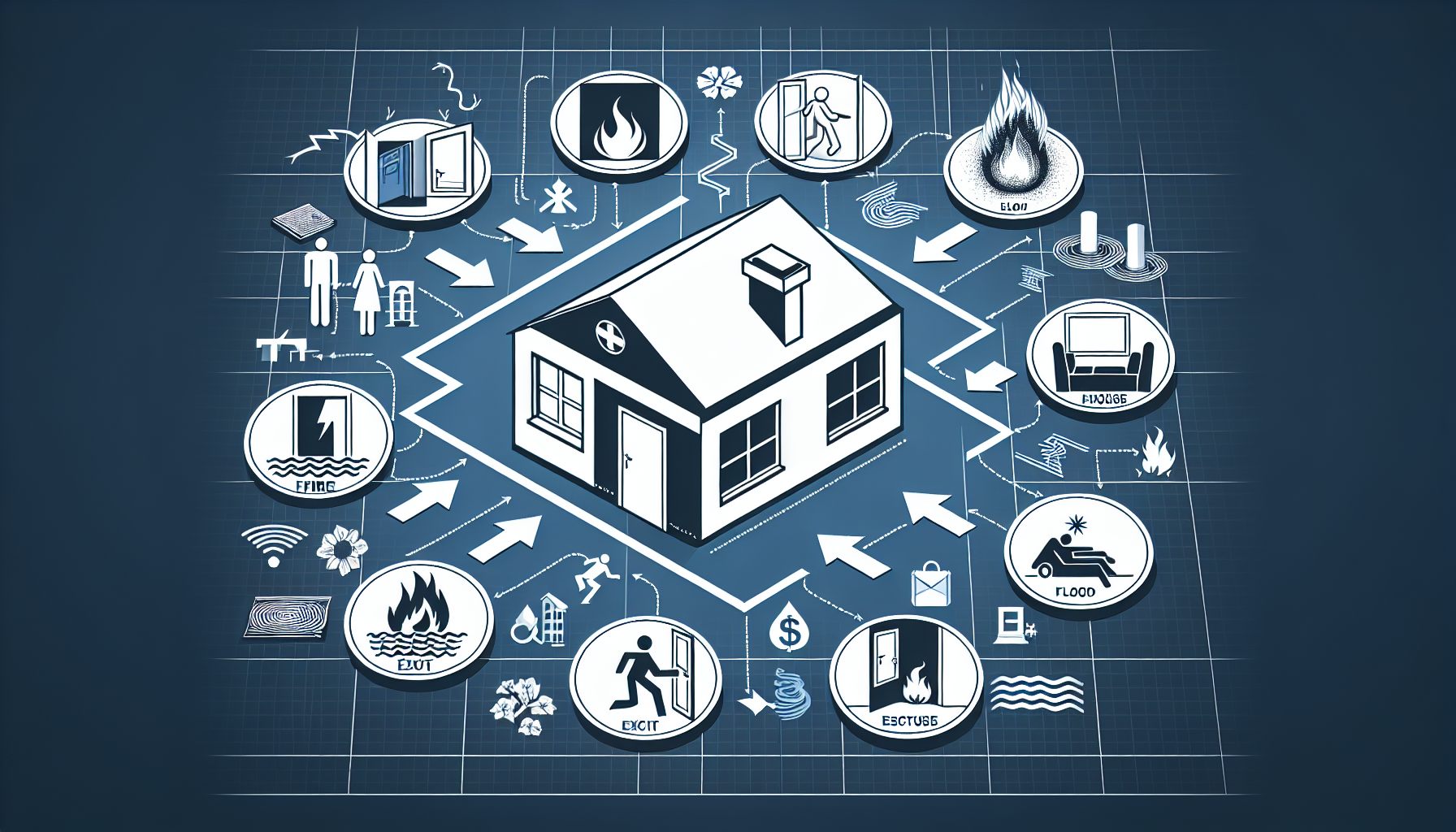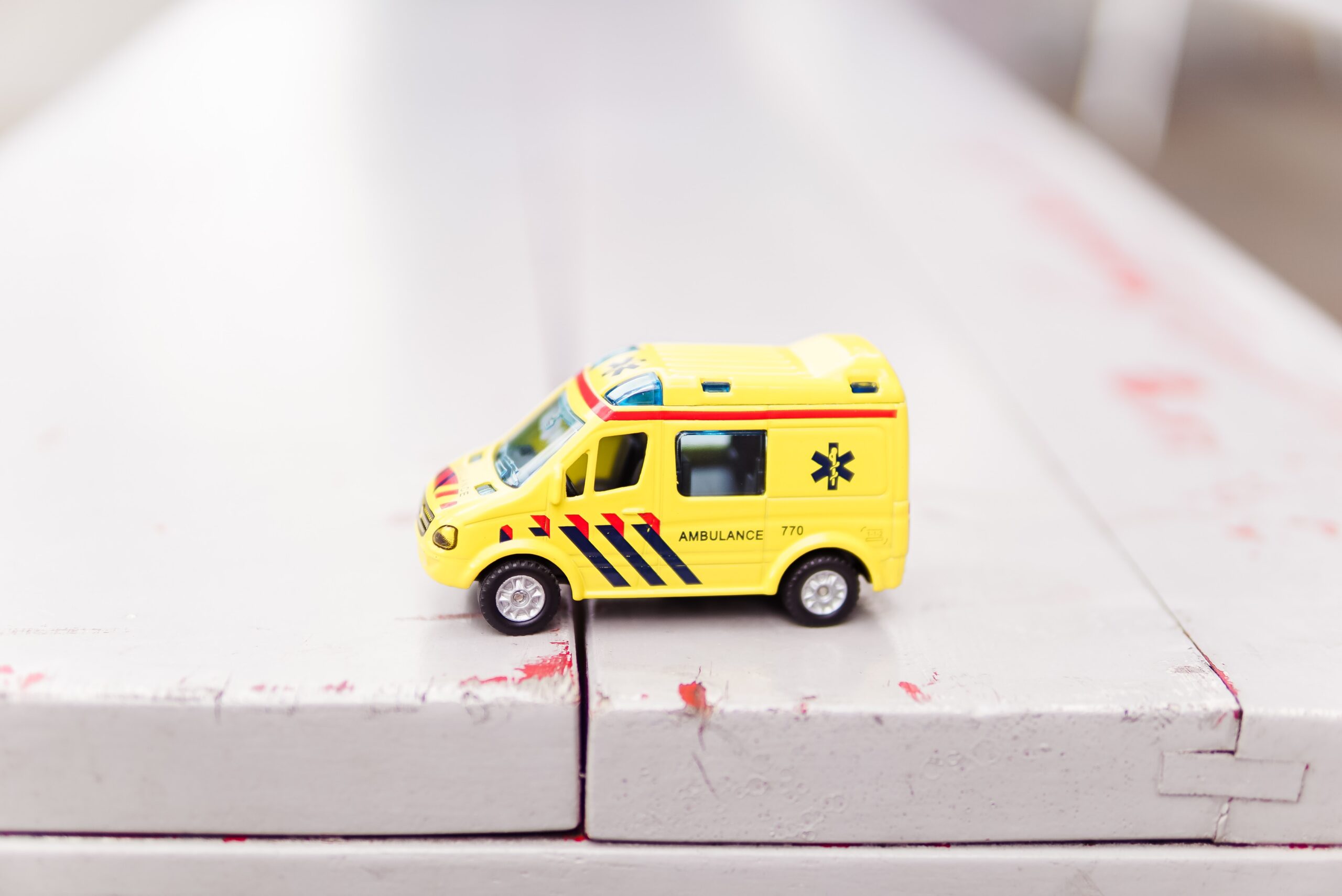Imagine a scenario where disaster strikes and you find yourself in a state of panic, unsure of what to do or where to go. Faced with such a situation, it becomes clear how crucial it is to have a well-thought-out emergency escape plan in place. In this article, we will explore the key steps you can take to create an effective emergency escape plan that will not only enhance your safety but also provide you with peace of mind in the face of unexpected emergencies.

Establish Clear Objectives
When creating an emergency escape plan, it is essential to start by establishing clear objectives. The first step is to identify potential emergency scenarios that could occur in your building or surroundings. This could include fires, natural disasters, chemical spills, or other unforeseen emergencies. By identifying these scenarios, you can then define the objectives of your escape plan.
The objectives of an escape plan may vary depending on the specific needs of your building and occupants. Common objectives include ensuring the safe and efficient evacuation of all individuals, minimizing the risk of injury or loss of life, and coordinating with emergency responders. It is important to consider the specific needs of individuals with disabilities or special requirements when defining your objectives. This could include providing accessible evacuation routes, additional assistance, or communication methods tailored to their needs.
Assess the Building and Surroundings
To create an effective escape plan, a thorough assessment of the building and surroundings is crucial. Start by conducting a detailed inspection of the building to identify potential emergency exits and alternative routes. This includes assessing the condition of staircases, elevators, and doors to ensure they are in good working order and accessible.
In addition to the building itself, it is essential to evaluate potential hazards in the surroundings. This could include nearby bodies of water, high-risk neighboring buildings, or natural elements that could impact evacuation efforts. Understanding these factors will help you determine the most effective escape routes and identify any additional precautions that may be necessary.
Designate Emergency Roles and Responsibilities
Assigning specific roles and responsibilities to individuals during an emergency is key to a well-organized and efficient evacuation process. Start by selecting an emergency coordinator who will be responsible for overseeing the execution of the escape plan. This person should have a clear understanding of the plan and be capable of making quick and informed decisions in high-stress situations.
Next, determine the specific responsibilities for each team member involved in the evacuation process. This could include individuals responsible for assisting those with disabilities, controlling access points, or ensuring everyone is accounted for during the evacuation. By clearly defining these roles, you ensure that everyone understands their responsibilities and can perform their tasks effectively.
Establishing communication protocols is also crucial. Determine how information will be relayed between team members, emergency coordinators, and occupants. This may involve the use of portable radios, phone systems, or other communication devices. Clear instructions and protocols should be provided to ensure that information is efficiently and accurately communicated during an emergency.
Develop Effective Communication Procedures
During an emergency, effective communication can make a significant difference in ensuring the safety and well-being of all individuals involved. Choose suitable communication methods that will facilitate quick and efficient communication. This could include intercom systems, public address systems, or even simple hand signals and verbal commands.
Establish emergency contact lists that include relevant phone numbers and contact information for emergency services, building management, and key individuals involved in the evacuation process. This information should be readily available to all occupants and regularly updated to ensure accuracy.
To ensure that communication procedures are understood and can be executed effectively, it is essential to implement a system for regular communication drills. These drills provide an opportunity to practice communication protocols, identify any areas that need improvement, and familiarize occupants with the steps they need to take during an emergency.

Create Detailed Evacuation Plans
A comprehensive evacuation plan includes detailed instructions on how to exit the building safely and efficiently. Designate primary and secondary evacuation routes to provide options in case one route is blocked or inaccessible. These routes should be clearly marked with signs and include information on any obstacles or hazards that may be encountered along the way.
Identifying assembly points is critical to ensure that occupants gather at a safe location once they have evacuated the building. These assembly points should be located at a safe distance from the building and clearly identified. In addition, consider options for sheltering in place if necessary, such as designating specific areas within the building for occupants to seek refuge until it is safe to evacuate.
Ensure Adequate Safety Equipment
To enhance the safety of occupants during an emergency, it is important to determine the necessary emergency equipment. This could include fire extinguishers, first aid kits, emergency lighting, and evacuation chairs or devices for individuals with mobility impairments. Regularly inspect and maintain safety devices to ensure they are in good working order and readily available when needed.
Once the necessary safety equipment is in place, it is crucial to train employees on how to use them effectively. Provide comprehensive training on the proper operation of fire extinguishers, first aid techniques, and any other safety devices in your building. This training should be repeated regularly to ensure that employees feel confident and are prepared to respond during an emergency.

Educate and Train Occupants
In addition to training employees, it is essential to educate and train all occupants of the building on safety procedures. Conduct regular safety awareness training sessions to ensure that everyone is familiar with the escape plan and understands their role in the event of an emergency.
Provide clear instructions on evacuation procedures, including where to go, how to exit the building, and any additional steps that may be necessary depending on the specific emergency scenario. This information should be clearly communicated to all occupants and easily accessible in the form of posters, brochures, or digital resources.
Occupants with disabilities or special requirements may require specialized training to ensure they understand the procedures and can safely evacuate. Develop tailored training programs to address the specific needs of these individuals, including how to assist them during an evacuation and any additional considerations that may be necessary.
Test the Escape Plan
Once an escape plan has been developed, it is vital to regularly test and evaluate its effectiveness. Perform regular evacuation drills to ensure that occupants understand the procedures and can promptly and safely evacuate the building. These drills also provide an opportunity to identify any issues or areas that need improvement in the escape plan.
After each drill, evaluate the effectiveness of the plan based on feedback from participants and observations. Make necessary adjustments to address any identified weaknesses or areas that need improvement. This may include modifying evacuation routes, updating communication protocols, or providing additional training to address specific issues.

Coordinate with Emergency Services
Effective coordination with local emergency services is crucial to ensure a prompt and efficient response during an emergency. Establish communication channels with the appropriate authorities to share your escape plan and provide them with any relevant information that may aid their response efforts.
Sharing the escape plan with emergency responders allows them to familiarize themselves with the layout of the building, potential access points, and any specific considerations that may impact their response. This collaboration can significantly enhance the effectiveness of emergency response efforts and help minimize the potential impact of an emergency situation.
Ensure that all occupants are familiar with emergency protocols and know how to contact emergency services if necessary. This includes providing clear instructions on how to report emergencies, who to contact, and what information to provide. Regularly review these procedures to ensure they align with the protocols of the local emergency services.
Maintain and Update the Escape Plan
An effective emergency escape plan is a living document that should be regularly reviewed, updated, and maintained. Conduct periodic reviews of the escape plan to identify any areas that may need adjustment based on changes to the building or its surroundings.
Consider feedback and suggestions from occupants on how to improve the plan. Encourage open communication and provide avenues for individuals to share their thoughts and ideas. This feedback can be invaluable in identifying areas of improvement and ensuring that the escape plan remains effective.
Keep emergency contact information up to date. Regularly review and verify the accuracy of contact numbers for emergency services, building management, and key individuals involved in the evacuation process. This information should be readily accessible to all occupants and easily updated as needed to ensure its reliability.
In conclusion, creating an effective emergency escape plan requires careful planning, thorough assessments, clear communication, and ongoing maintenance. By following the steps outlined in this article, you can ensure the safety and well-being of all individuals in your building during an emergency. Remember, preparation is key, and a well-prepared and practiced escape plan can mean the difference between a safe evacuation and a potentially hazardous situation.\


